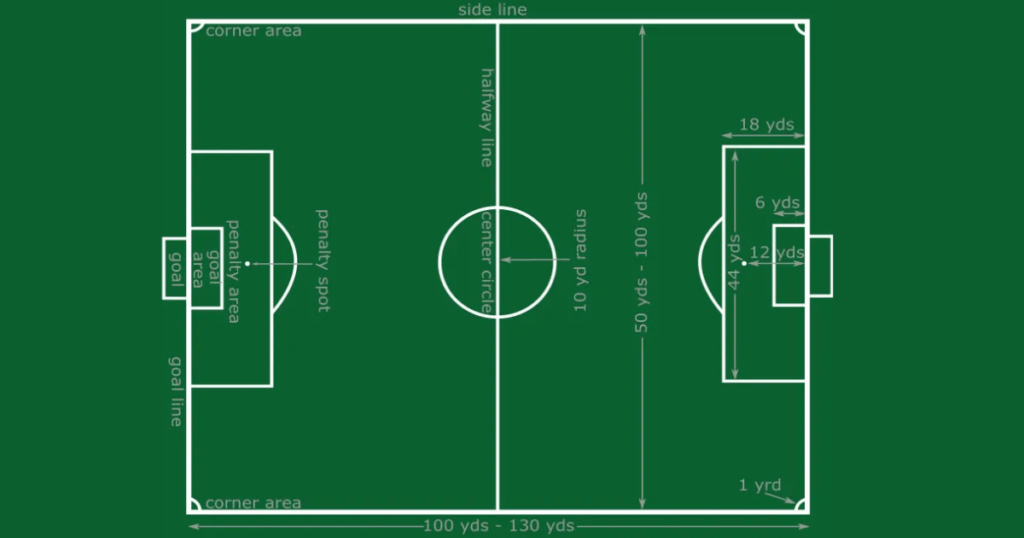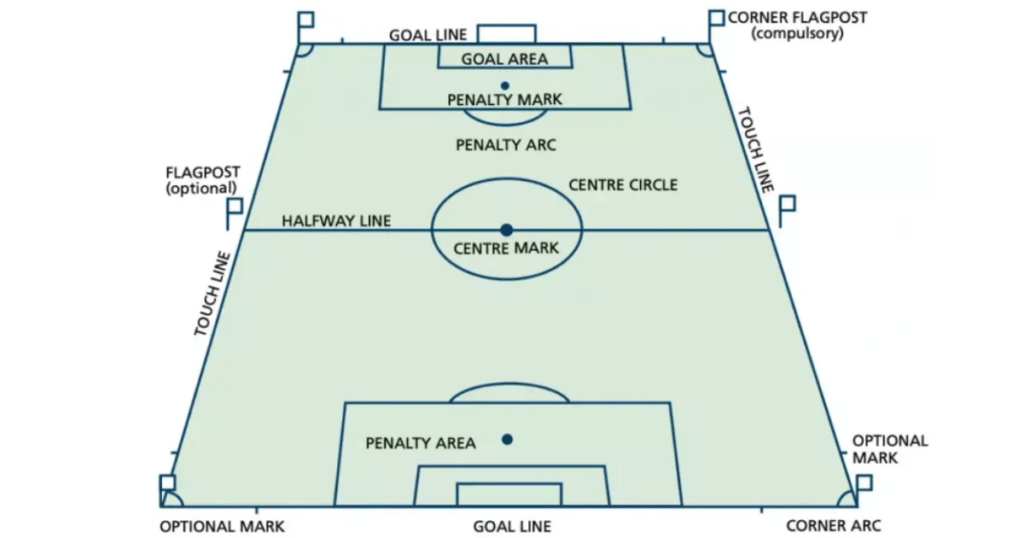How big is a Football Field?
The actual dimensions of football fields or pitches may vary from one ground to the other based on one factor or the other. Each football field, be it in a local park or some of the most famous arenas like Wembley, Santiago, and Maracana Stadium, has to meet the requirements of the International Football Association Board.
The football field is usually of a rectangular shape and measures 100 and 130 yards in length and 50 to 100 yards in width. This basically means that the size of a football field may differ depending on the size and kind of competition in the field depicted. Let’s analyze it.
Standard Dimensions of a Football Field

Field Dimensions for Domestic Leagues & Competitions:
- Length: 100 to 130 yards
- Width: 50 to 100 yards
Field Dimensions for International Matches & Competitions:
- Length: 110 to 120 yards
- Width: 70 to 80 yards
Also Read: What is a soccer pitch?
Key Areas of the Pitch and Their Measurements
A football field extends beyond its rectangular shape and goals which mark its boundaries and contains two major boundary lines with the longest ones being touchlines while the goal lines remain shorter. For the ball to become out of play or a goal both its sides need to cross these lines. Multiple strategic areas on the field determine how matches progress:
- Center Circle
- Penalty Area (18-yard box)
- Goal Area
Why Do Football Pitches Vary in Size?

Football is different from other sports like basketball and American football because it allows players to use fields that are between certain sizes. Clubs and stadiums that must operate within constrained space restrictions are supported by adjustable pitch dimensions.
The playing styles of both teams are influenced by the disparity in pitch dimensions between Anfield and Camp Nou. Manchester City and other fast-passing clubs can take advantage of their opponent’s weaknesses by using their preferred style of play on large fields. When pitch dimensions are kept modest, defensive teams can execute their high-intensity pressing strategy, which helps them win the game.
Within the bounds of the rules, home clubs in professional leagues can alter the size of the pitch to suit their tactical plans. To guarantee fair competition, all fields taking part in important competitions, such as the FIFA World Cup, must adhere to precise international dimensions.
Playing Surfaces: Natural vs Artificial Turf
There are two types of football fields: artificial turf and natural grass. The Premier League, La Liga, and other major leagues require the fields to be covered with real grass. In nations with harsh climates, maintaining grass becomes difficult, leading to the widespread use of artificial turf. FIFA only authorizes artificial surfaces that meet certain quality requirements in order to maintain fair competition and player safety.
Regardless of the surface type, all pitches must have distinct white lines in order to adhere to the standard configuration. The exact measurements of the field and grass height have a direct effect on the game’s speed and strategy.
Also Read: A Complete Guide for Basic Rules of Soccer
